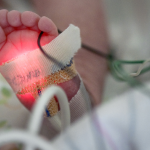Sepsis, an overwhelming infection, remains among hospitals’ most difficult conditions to identify and treat. Algorithms within electronic medical records have been developed to help clinicians. So how is this real-world A.I. of medicine working out? Just a bit better than a coin toss.
sepsis
Sepsis is an overwhelming infection: bacterial, viral, or fungal. It requires immediate medical attention and intervention. EPIC, the company with the largest share of the electronic medical records market, developed an algorithm to help physicians timely identify at-risk patients. An independent study shows that it is not helpful. Is this healthcare’s 737Max moment?
Sepsis, a microbial infection that’s overwhelming, remains one of the most significant sources of morbidity and mortality. In the U.S., “black individuals” have both a greater risk of hospitalization and death than their “white” counterparts. While exposure and susceptibility may have roots in socioeconomic disparity, a new paper suggests that genetics may influence outcomes more than disparate care.
EPIC is arguably THE electronic health record system in the US with the most significant market share (56% of all patient records). Countless millions of federal money have passed into their corporate coffers during our transition to digital record keeping. Artificial intelligence, which is more sizzle than steak, at least medical care has been held out as a grail where the data held in electronic health records could be fashioned to improve medical care. A study from JAMA updates us on that particular marriage.
Long before COVID-19, overwhelming infection, sepsis, often bacterial rather than viral, has been a leading cause of death in US hospitals. Sepsis has attracted the concern of Medicare, which requires hospitals to report on their adherence to a bundle of treatment measures. How is that working out?
Before endless speculation abounds, as we saw with Ruth Bader Ginsburg’s recent post-operative cancer recovery, or when Melania Trump was admitted for a kidney procedure, it is important to debunk falsehoods.
Caravaggio famously painted various biblical scenes, such as the beheadings of John the Baptist, Holofernes and Goliath. Though the artist did not meet such a violent demise in the early 17th century, he may have suffered an unpleasant one: Sepsis due to Staphylococcus aureus.
Baking soda, bicarbonate, is a household staple. Does it have a role in treating sepsis? An in vitro study may point to a new treatment.
Another underwater birth, another near-fatal consequence. This time the imperiled, septic newborn endured unnecessary multi-organ failure, which necessitated a two-month hospitalization in intensive care.
Though pneumonia and infection are among the litany of known complications after water birth, the Centers for Disease Control and Prevention (CDC) just reported two cases of Legionnaires’ Disease in newborns in Arizona born this way. Further investigation identified an infant death in 2014 in Texas from Legionellosis.
With the word "cure" we think of it as an end. But, in fact, it's often the end – of a beginning. For those surgically “cured” from cancer, enduring amputation from sepsis or receiving a transplanted organ, the story — though different and uncharted — begins anew.
Minnesota Gov. Mark Dayton collapsed Monday night in front of legislators while giving the State of the State address. Though he rebounded well, he just disclosed a recent prostate cancer diagnosis. Learn about the proper medical care that's needed when someone faints, and why it happens in the first place.











